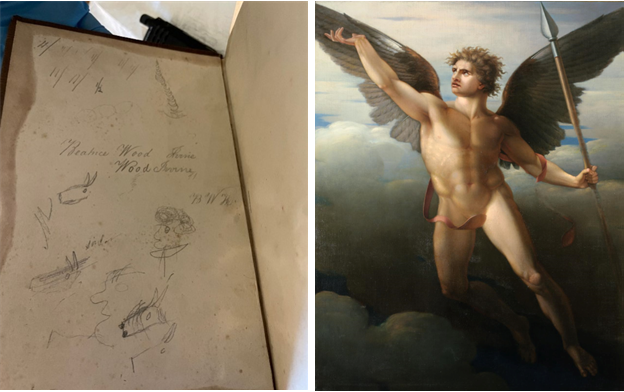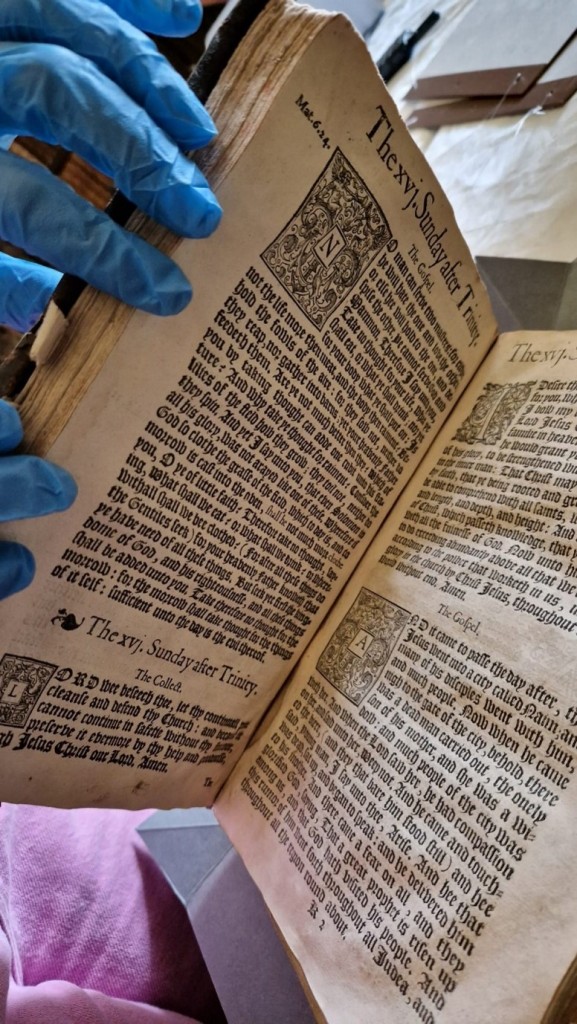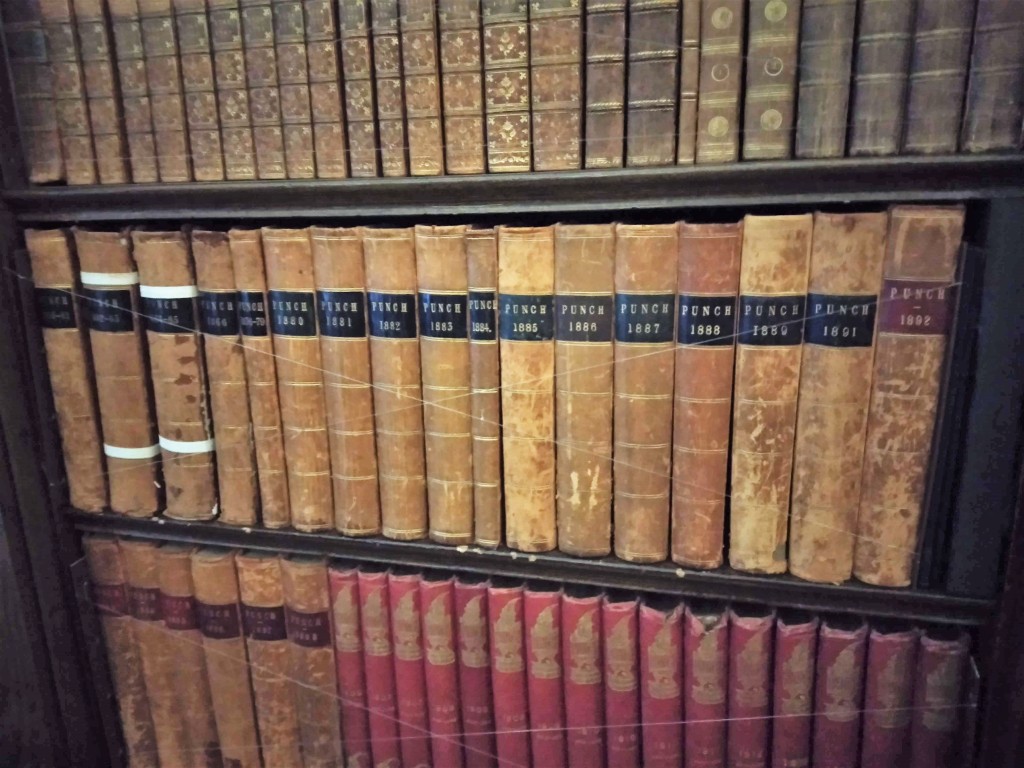Drum Castle, part of the National Trust for Scotland, has a fascinating and significant library of over 4000 books. Thankfully, the castle now has a dedicated team of volunteers who help to care for and catalogue the collection. They meet once a week to discover the secrets hidden between the pages…
Coming from a range of backgrounds, from students, to working professionals to retirees, the collections care volunteers methodically work their way along each shelf in the library. Each book is carefully removed, identified, and matched to the library catalogue and then inspected for damage. The most common being the general wear and tear that comes with age – understandable, considering some of the books are 500 years old! This can vary from quite minor, such as scuffing or a folded page to severe, where the spine has separated from the text block and the book is no longer safe to open. One set of books even shows evidence of being left too close to a fire, with scorch marks on the spine.
Of course, many of the books were loved and cherished by the Irvine family, who lived at Drum Castle until the mid-1970s. Clues to the books’ history can be found in the doodles, signatures, notes and nameplates between the pages. In these cases, volunteers employ a bit of detective work to build a deeper understanding of the castle’s history.
This ‘Walker’s Dictionary’ (below) belonged to Beatrice Wood Irvine, born 1821. Cheekily, she appears to have practised writing her name, along with sketches of the family dog and a curly haired man. Perhaps this was her rendition of ‘The Archangel Gabriel’, the splendid painting that sits above the fireplace in the library, said to be a self-portrait of her ancestor, Hugh Irvine?!

Volunteers also have to be alert for any signs of pests in and around the books. Holes left by woodworm, or the affectionately termed ‘munching’ of silverfish crop up regularly, but thankfully, so far this has all been historic damage. Learning not only to identify pests and their tell-tale signs, but also about creating the perfect environment to keep books happy and pests at bay is an important skill for anyone engaged in collections care.
After the inspection process the actual conservation cleaning can begin. Working in pairs, each book is carefully dusted with a soft pony hair brush along the spine into a special museum-grade vacuum. Some books are tied with cotton tape to support sagging text blocks, then returned to a clean shelf. Averaging 30 to 40 books inspected, catalogued and cleaned each week, Drum Castle’s collections care volunteers are in it for the long haul. However, the reward of getting a glimpse into such a fascinating array of books and the history they speak to is priceless.
By Katherine Rutherford, edited by Caitlin Jamison.


